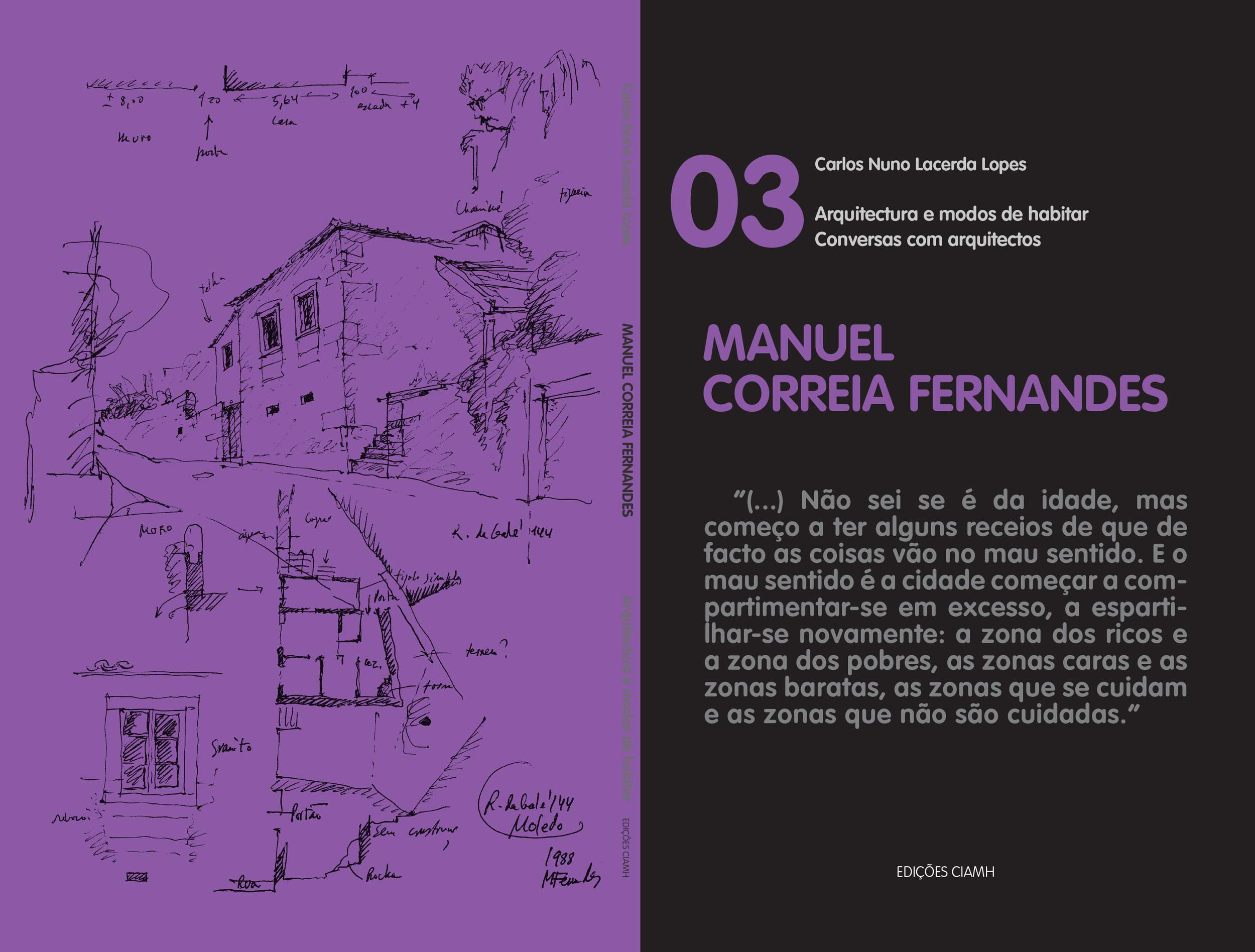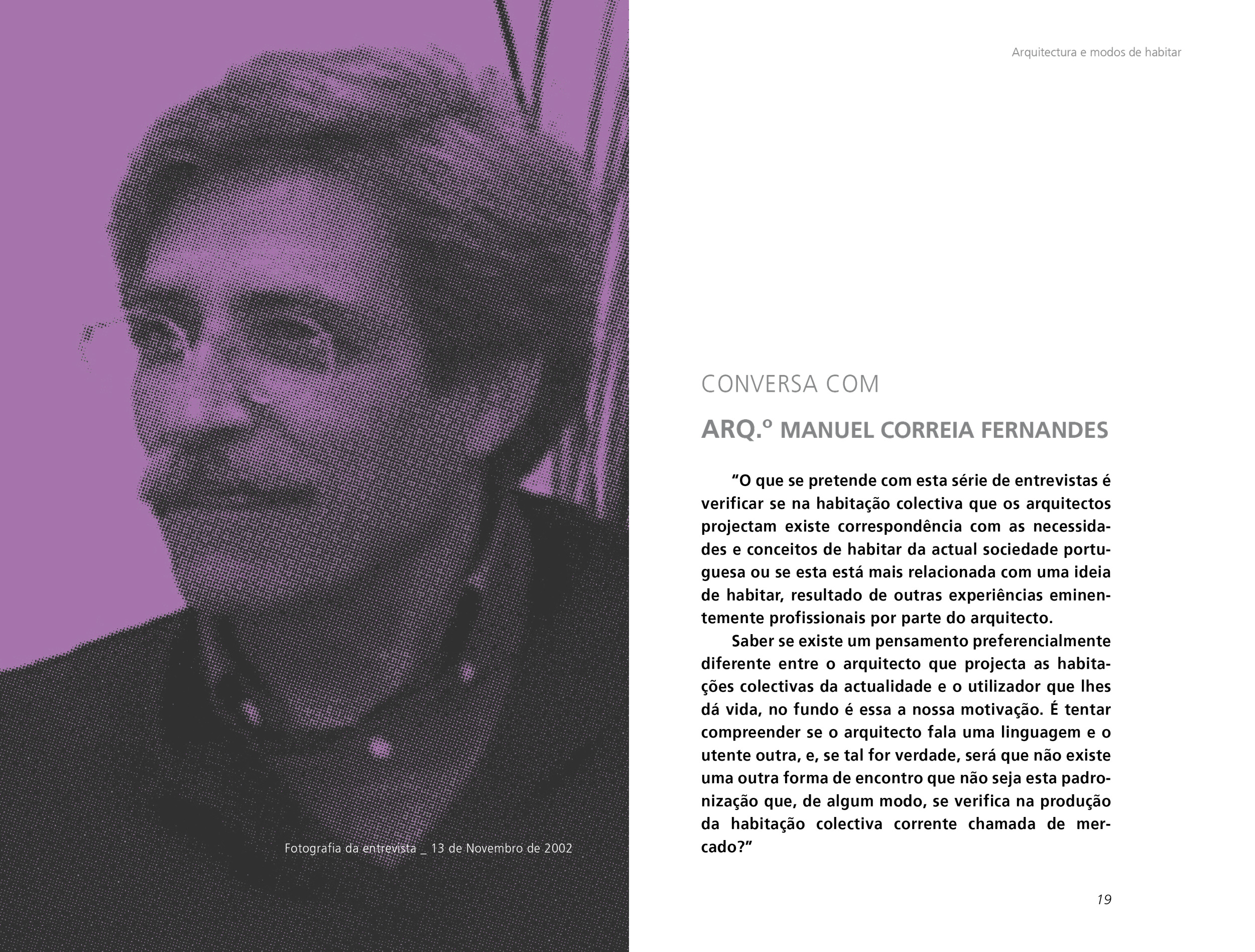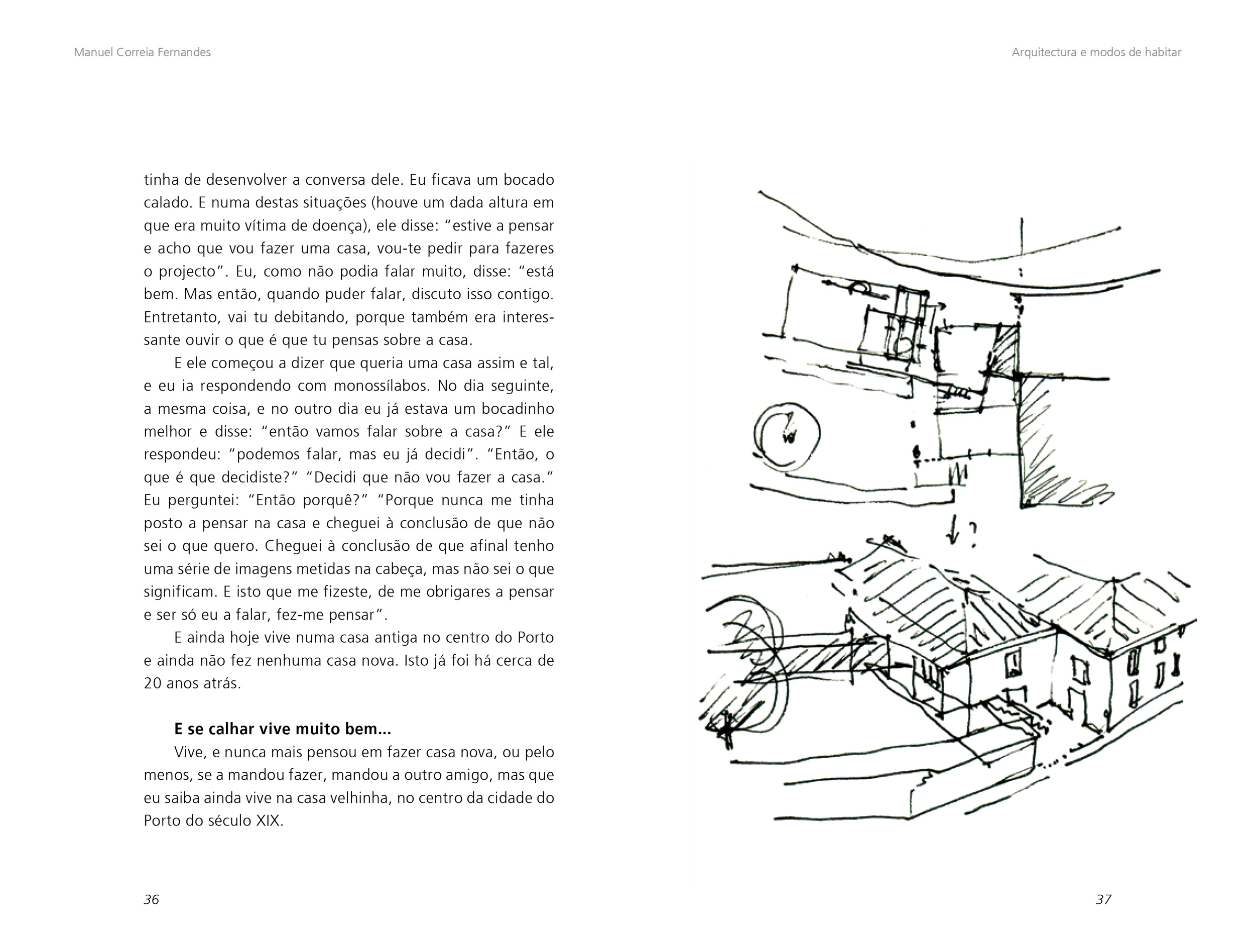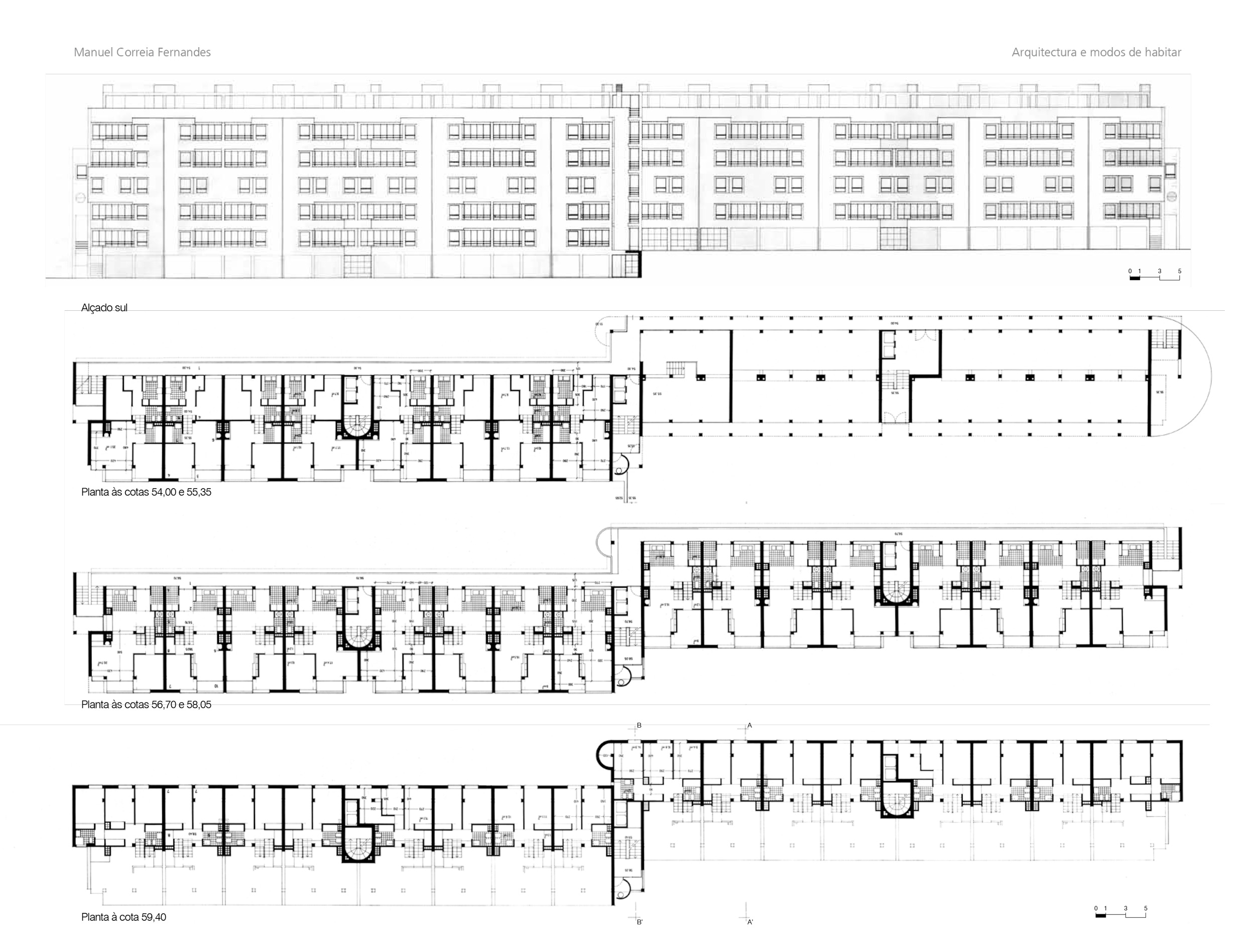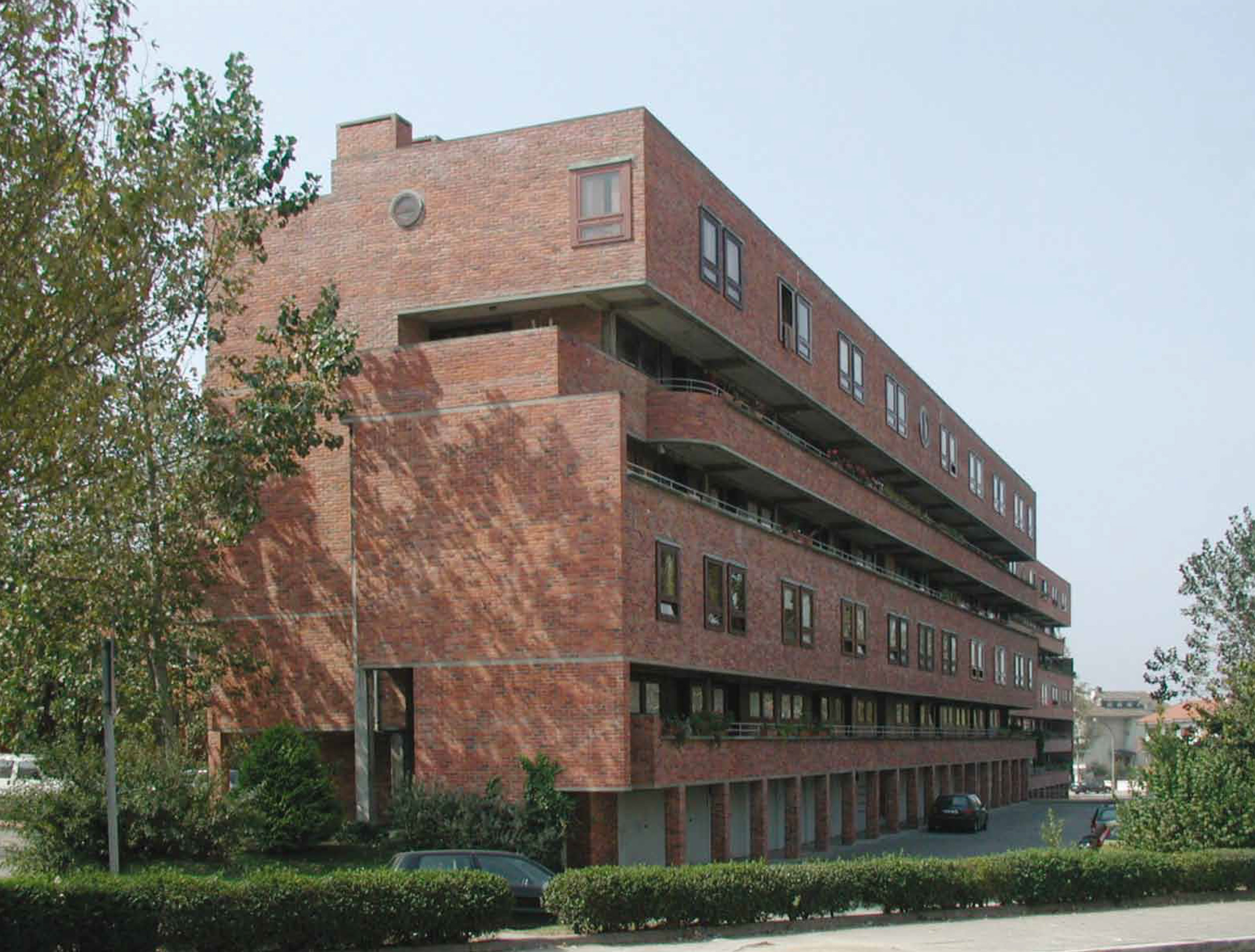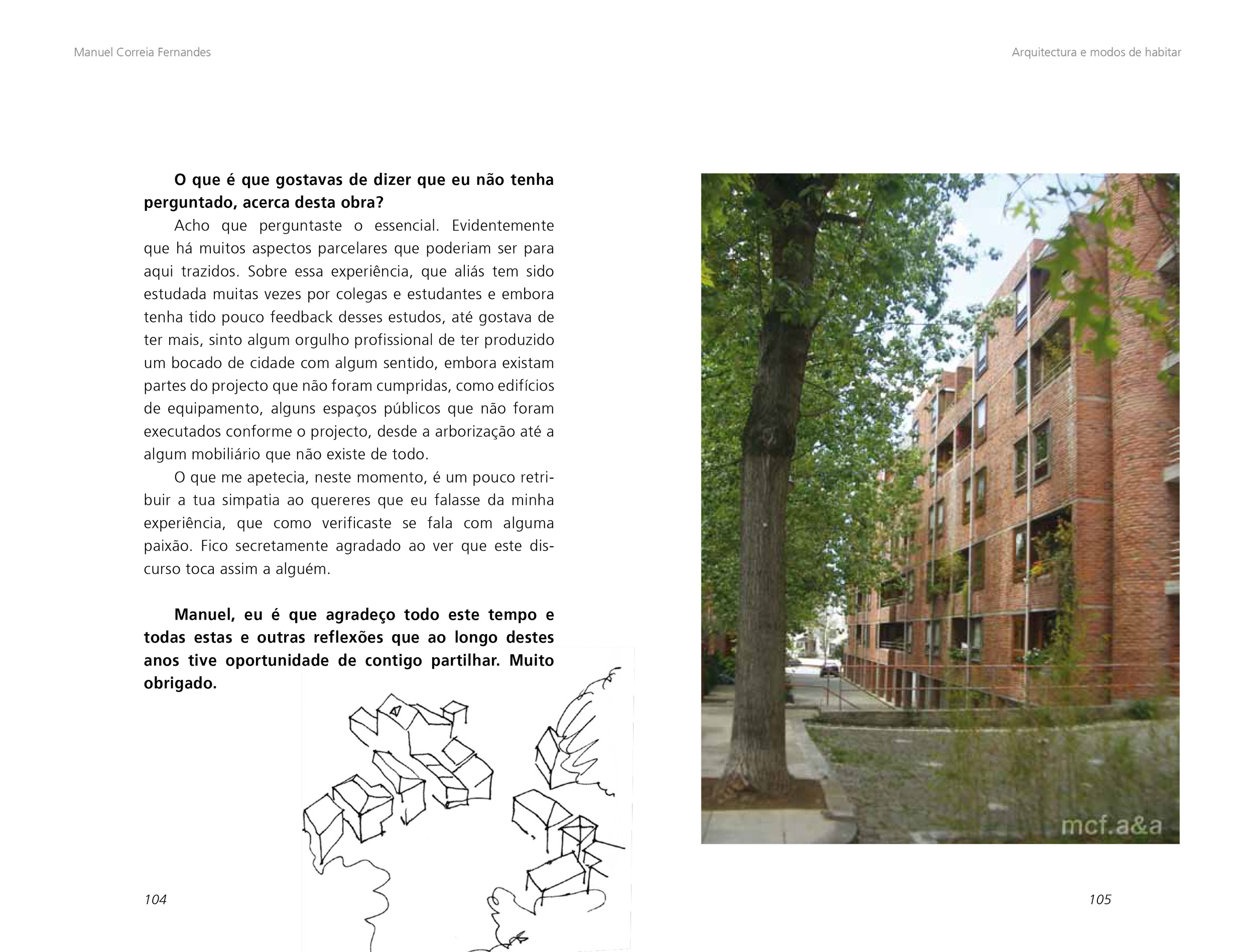ISBN
978-989-98073-2-7
Edition
CIAMH, FAUP
Year
2013
Number of pages
120
Dimension
14,5x22cm
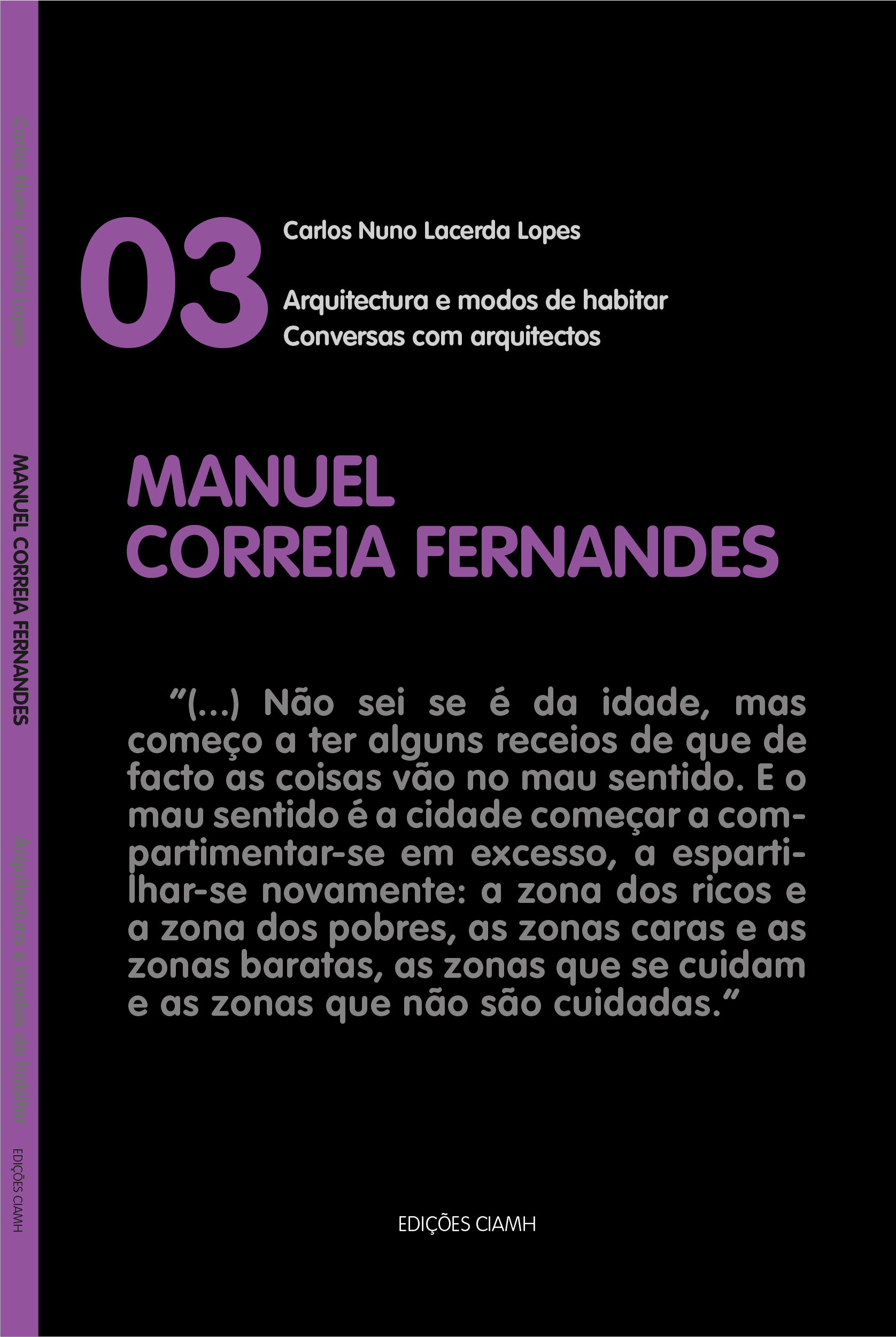
ISBN
978-989-98073-2-7
Edition
CIAMH, FAUP
Year
2013
Number of pages
120
Dimension
14,5x22cm
“This is a collection of interviews by architect Nuno Lacerda Lopes. They are conversations between architects of the School of Oporto where the process of building an ideal of architecture, profession, society and school is sought, based on a personal and open reflection and even clarify the theoretical and practical concerns as well as the circumstances that underlie Portuguese architecture today”.
Excerpt
“First of all good afternoon, architect Manuel Correia Fernandes, one of the most renowned Portuguese architects, with remarkable experience in the field of multi-family housing, although he also carried out numerous works and several very important facilities today. But it is mainly housing that I would like to talk to you about today. So I would start by asking what was your education and what were your great influences?
Good afternoon. Thank you very much for this mini, but very stimulating presentation. My education, as an architect, is that of what the School of Fine Arts was all about, at that time. It was a place of culture, which has to do with that world that is the Fine Arts, which I claim at this moment, more than, perhaps, I claimed ten or fifteen years ago. This is because I understand that architecture is something that is closer to art and creation than science and exactness, which, perhaps, the change to university came to put as a topic for discussion, but we have not discussed it either.
My training, in the field of Fine Arts, has to do with a wide range of issues, with my colleagues in painting and sculpture, and has to do with a very important period of time: that of the first years of the 57th reform. Therefore, probably the peak of the participation or presence of Architect Carlos Ramos in the School of Fine Arts as director and the professors he brought with him and marked me in a very decisive way.
I wanted to nominate Arnaldo Araújo in the first place, I wanted to mention Carlos Ramos himself, and I didn’t want to mention anyone else from that time so as not to hurt susceptibilities, although all the others are important. Why these? Because they connected me to a world that became my world of reference and that is first and foremost the world of reality, of the experience lived in loco, in the various places, whether in the poor quarters of the city, or in the villages where Arnaldo Araújo worked, where he did his thesis, in Rio de Onor. I come from Trás-os-Montes, and that…”
